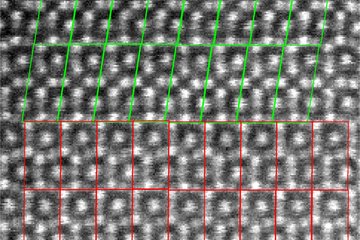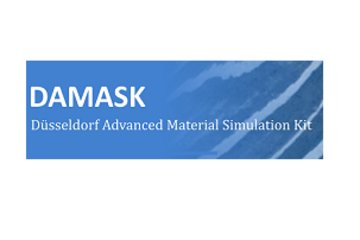All genres
401.
Poster
Size effects on mechanical stability of metastable austenite. GDRi CNRS MECANO General Meeting on the Mechanics of Nano-Objects, MPIE, Düsseldorf, Germany (2013)
402.
Poster
Experimental-Numerical Analysis of Stress and Strain Partitioning in Dual Phase Steel. 10th Materials Day, Joint workshop of the Materials Research Department (MRD) and the IMPRS-SurMat, Bochum, Germany (2012)
403.
Poster
Segregation-Induced Phase Transformation on Grain Boundaries in Fe–Mn. TMS 2012, Solid-State Interfaces II Symposium, Orlando, FL, USA (2012)
404.
Poster
Study of local chemical gradients in advanced precipitation hardened TRIP steel. 52nd International Field Emission Symposium IFES 2010, Sydney, Australia (2010)
405.
Poster
Effect of grain refinement on strength and toughness in dual-phase steels. 2nd International Symposium on Steel Science ISSS 2009, Kyoto, Japan (2009)
406.
Poster
Microstructural evolution during hot working of 1.4362 duplex stainless steel. 2nd International Symposium on Steel Science (ISSS 2009), Kyoto, Japan (2009)
407.
Poster
Experimental study on orientation gradients and GNDs in ultrafine grained dual-phase steels. International Conference on Processing & Manufacturing of Advanced Materials (THERMEC 2009), Berlin, Germany (2009)
408.
Poster
Influence of the As-Cast Microstructure on the Evolution of the Hot Rolling Textures of Ferritic Stainless Steels with Different Compositions. 15th International Conference on the Textures of Materials (ICOTOM 15), Carnegie Mellon University Center, Pittsburgh, PA, USA (2008)
409.
Poster
Fabrication of Ultrafine Grained Ferrite/Martensite Dual Phase Steel by Large Strain Warm Deformation and Subsequent Intercritical Annealing. ISUGS 2007 (International Symposium on Ultrafine Grained Steels), Kitakyushu, Japan (2007)
410.
Poster
Improvement of Mechanical Properties of Spring Steels through Application of Thermomechanical Treatment. Steels for Cars and Trucks, Wiesbaden, Germany (2005)
411.
Poster
Morphology of Martensite Formed From Recrystallized or Work-Hardened Austenite. Solid-Solid Phase Transformations in Inorganic Materials 2005 (PTM 2005), Phoenix, AZ, USA (2005)
412.
Poster
Effect of Austenite Deformation on the Precipitation Behaviour of Si–Cr spring Steels During Tempering. Solid-Solid Phase Transformations in Inorganic Materials 2005 (PTM 2005), Phoenix, AZ, USA (2005)
413.
Teaching
Sustainable Materials Science and Green Metallurgy (Sustainable Materials and Metallurgical Science & Engineering). Lecture: SS 2021, RWTH Aachen University, 2021-04 - 2021-07
414.
Teaching
Microstructure control and mechanical properties of ultrafine grained dual phase steels. Lecture: Osaka University, Osaka [Japan], December 24, 2008
415.
Teaching
Microstructure control and mechanical properties of ultrafine grained dual phase steels. Lecture: Nippon Steel Corporation, Kimitsu [Japan], November 28, 2008
416.
Teaching
Warmumformbarkeit von Stahl. Lecture: Kontaktstudium Werkstofftechnik Stahl, Teil III, Technologische Eigenschaften, Werkstoffausschuss im Stahlinstitut VDEh, Technische Universität Dortmund, June 22, 2008
417.
Teaching
Fabrication of ultrafine grained dual phase steels. Lecture: National Institute for Materials Science (NIMS), Tsukuba, Japan, October 22, 2007
418.
Teaching
Some Aspects of Texture Gradients in Steels. Lecture: Max-Planck Hot Forming Conference, MPI für Eisenforschung GmbH, Düsseldorf, Germany, September 05, 2005
419.
Teaching
Ultrafeinkörnige Stähle. Lecture: Max-Planck Hot Forming Conference, MPI für Eisenforschung GmbH, Düsseldorf, Germany, December 05, 2002
420.
Teaching
Halbwarmwalzen als ein neues Produktionskonzept für Kohlenstoffstähle. Lecture: Max-Planck Hot Forming Conference, MPI für Eisenforschung GmbH, Düsseldorf, Germany, December 05, 2002











